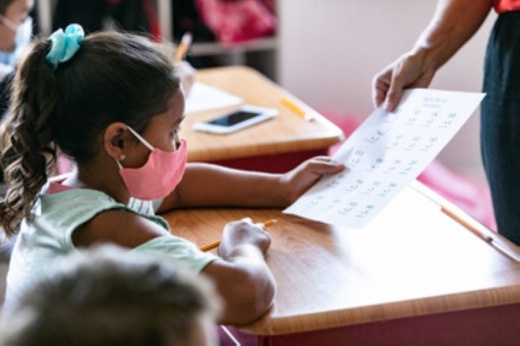Meghan Whittaker, director of policy and advocacy for the National Center for Learning Disabilities, spoke with Community Impact Newspaper about the impacts of COVID-19 on special education students and their development in and out of the classroom. The NCLD performs research and advocacy as it relates to improving the lives of the one in five children and adults nationwide with learning and attention issues, according to the organization's website.
Answers have been lightly edited for length and clarity.
What are some of the academic, social and emotional effects that COVID-19 is having on students with disabilities?
We need to remember that all students have been deeply impacted by COVID-19, and certain communities have been hit hardest. We know that many students from communities of color and low-income communities have been more impacted by COVID-19 in terms of physical health. Students may have experienced death or illness in their families, which can be hard for a child to grapple with. Some students may have parents out of work and be experiencing food or housing insecurity. Stress levels and anxieties are increased for many families at this time, and that can have a direct impact on students.
But for all students, COVID-19 has disrupted their daily routines and their relationships with caring adults and other students at school. They are missing out on the social and emotional connections that they've become accustomed to, and those are hard to replicate virtually. And for students with disabilities, the biggest loss has been a reduction in the specialized instruction and services they've received over this time. In many cases, the same services that were written in their individualized education program, or IEP, were not provided when schools transitioned to remote instruction. So, while most students missed out on instructional time, we expect students with disabilities to regress even more without the appropriate and necessary services they had been receiving in school.
How can schools design and adapt instruction amid the pandemic to best support success in special education students?
First, none of this can be done without closing the digital divide. With the high number of districts choosing remote instruction, it is essential to get every family connected to broadband and to ensure that every child has a device that allows them to participate in virtual learning. Instructional packets are not sufficient if we want children to make progress academically.
Second, designing and adapting instruction needs to be done individually for each child. Schools and IEP teams should be connecting with families to better understand the situation at home, what the child's needs are in this unique setting and how those needs might have changed over the last six months. A great deal of instruction and some services can be provided virtually. Educators need to be fully prepared to provide effective instruction in a virtual setting, including providing accommodations.
Students, parents and educators need to be aware of the accessibility features available to them on their virtual learning platforms to ensure students can customize their learning experience, and schools need to rethink how they use specialized instructional support personnel to support virtual learning. There are ways that those personnel can connect with parents to provide strategies and support in the home and ways that they can also support learning in a virtual classroom, whether 1:1 or in small-group instruction.
What can staff do this school year to mitigate some of the instructional loss from the spring and continue accelerating learning?
In many ways, schools need to get back to the basics. We know what works for students with disabilities. We know what evidence-based practices are. But we need to translate those more effectively to a virtual setting. The first step is getting high-quality and evidence-based instruction to every student and ensuring that students receive synchronous, live instruction from a teacher for some portion of every day. Only once we reestablish good instruction can we begin to assess where students are and begin providing more intensive supports to help them regain ground that may have been lost during this time. We need to think strategically about how to design curriculum in a way that not only finishes out the lost content from last year but builds on foundational skills or groups content differently so that students can move through it more quickly.
How can special education parents best support their students with all the change to their instructional routine?
An important thing parents can do is communicate with their student's IEP team or educator. Parents have observed their students at home for some time and have incredible insight to offer the IEP team about what has been working, what hasn't and what kind of support the child might need in this new setting. Open communication and information sharing are essential, and parents and schools will need to collaborate to effectively serve students.
And, of course, it's important to understand the stress or worry your child might be feeling during this uncertain time. Ensuring the student has a routine at home, a space to complete schoolwork and also time for other things that will bring them joy is important. But don't hesitate to seek the support your child needs, whether it's academic, social or emotional. Your school is there to help.





